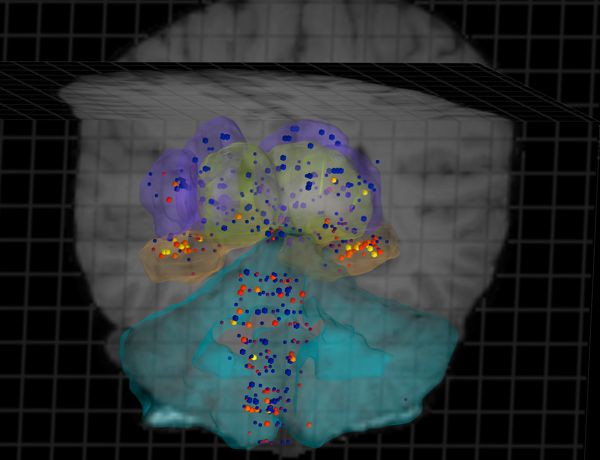Researchers Map the Genes of the Human Brain

Though researchers have had access to atlases of mice brains for quite some time, a study published online in Nature has revealed the results of the first map of the human brain. The DNA analysis, from the Allen Institute for Brain Science, is the most thorough one of the organ to date, and has found that the human brain uses 84 percent of the genes for various functions.
The data was obtained thanks to the donation of two "clinically unremarkable" complete brains from a 24-year-old man and 39-year-old man. They also examined one hemisphere of a third brain.
In order to obtain the data, scientists scanned the two brains before chopping them into tiny pieces. Then they measured each lump for the 20,000 genes in the human genome. They found 400 to 500 discrete areas in each hemisphere.
The researchers found that the brain uses the overwhelming majority of the human genome, more than any other organ. Gene activity in the cortex, the wrinkly outer layer of the brain, was similar to, but distinct from other areas, of the brain like the stem. Gene activity in the cortex also corresponded to particular roles of the various regions of the brain, like movement. The atlas also found that genes were fairly evenly used across hemispheres, indicating that the differences between hemispheres in managing different tasks, like language, were more subtle than their tools were able to indicate.
They also found that the genetic map was overwhelmingly similar for both men, who were similar in age, gender and ethnicity. Scientists believe that similarity could indicate a genetic blueprint.
They believe that the genetics of women's brains could be different than those of men, but started with men's brains because there were simply more available.
Researchers hope that dissecting the genetics of the human brain will help with the discovery of new treatments for diseases. And, because it can be compared to mouse brains, it will hopefully be easier to examine exactly why some treatments seem to work in mouse models but fail in human trials. Knowing the difference could cut costs, both in finances and in time, that can plague pharmaceutical companies.
The Allen Institute is funded by Microsoft co-founder and billionaire Paul Allen.
The results of the analysis were published in Nature.
Published by Medicaldaily.com



























